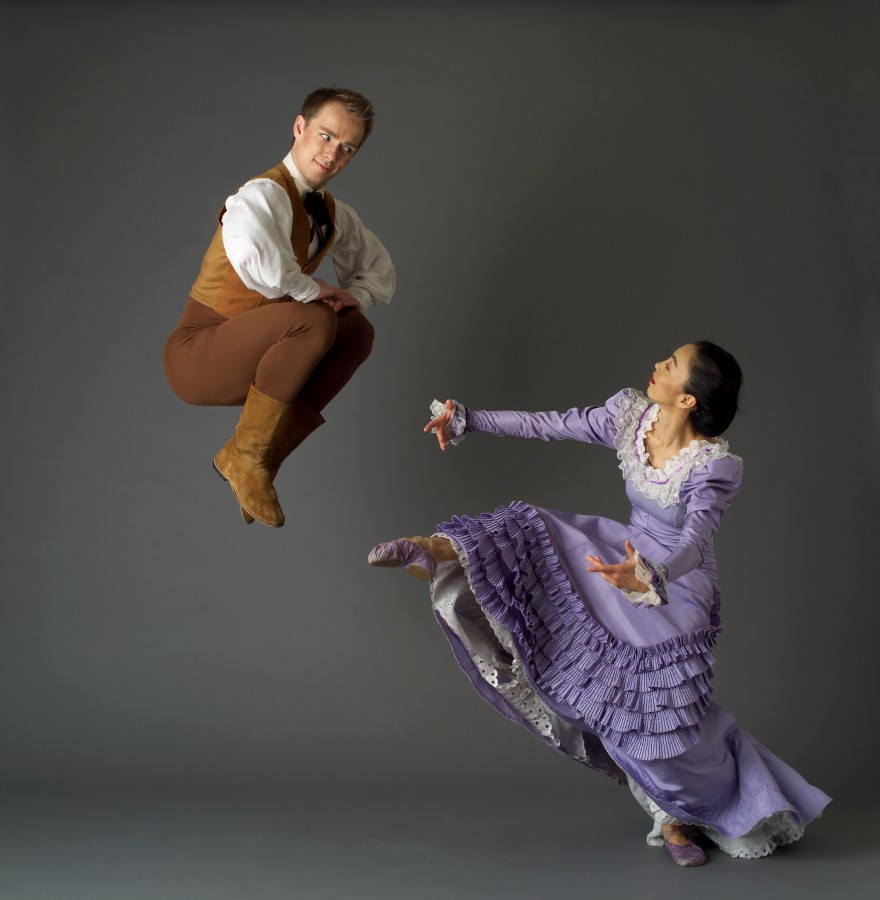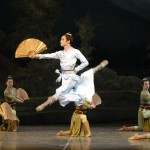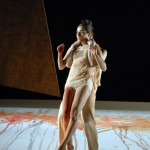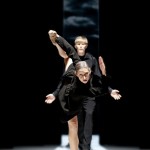Leigh Donlan reports from Zellerbach Hall in Berkeley:

Heidi Stoeckley Nogoy of The Martha Graham Dance Company in Graham’s CAVE OF THE HEART (Photo: John Deane)
Graham disciples from all over the Bay Area flocked to Zellerbach Hall on Friday night to celebrate the return of the Martha Graham Dance Company to Cal Performances, after a twenty-five year absence. In her introductory speech, Artistic Director Janet Eilber reminded the audience of Graham’s symbiotic relationship with the university, having performed at Cal’s Greek Theatre with Ruth St. Denis and Ted Shawn in 1916. Eleven members of the Berkeley Symphony accompanied the dancers on various strings, winds, brass and a piano, conducted by the company’s music director, Aaron Sherber.
Graham’s iconic celebration of 19th century American pioneers, Appalachian Spring focuses on a young couple on their wedding day. The set comprises a minimalist bonelike structure of a farmhouse, designed by Japanese American sculptor, Isamu Noguchi, keeping the stage bright and open, and conveying the cultural optimism of the time. The delightful cast of Followers appeared more like children than a puritanical congregation, with their tiny claps and quizzically cocked heads – oh, the wisdom of Martha, her social commentary always cuts to the core, even as Maurizio Nardi’s hilarious Preacher dashes around frantically in his sermon scene, warning people of the errors of their ways while gradually becoming possessed by his own inner demons. The gorgeous Natasha Diamond-Walker gave us an indelible portrait of the commanding Pioneer Woman, her long lines sweeping gracefully through the landscape, but always finished with sternness. The young bridal couple (Blakeley White-McGuire and Abdiel Jacobsen) moved together like they’d known each other forever, and Jacobsen thrilled us with his one-armed lifts of his new bride above his head.
The second half of the program began with Cave of the Heart, the very dark tale of the sorceress Medea – a visual feast, with another minimalist set by Noguchi and abstract costumes originally designed by Graham herself. Miki Orihara was a fearsome Medea, holding nothing back while exacting her revenge on her lover, Jason (Tadej Brdnik) who abandoned her, and their children, for a beautiful princess (Charlotte Landreau.)
Brdnik’s prolonged poses as he straddled stepping stones, with the princess draped across his lap or over his shoulders, supporting their combined weight, were incredibly difficult and perfectly executed. The doomed Landreau, with her naturally soothing grace, drew sympathy from the audience.
Comic relief was woven into this version of the tale, with Brdnik muscling about the stage, adopting Olympian poses and all but kissing his own pectorals, and Medea awkwardly hauling the princess’ carcass across the floor in a long, snake-like sack.
With her radiating intensity and striking beauty, Carrie Ellmore-Tallitsch, as The Chorus, reminded me of Graham dancers of olden days. She truly embodied the drama of the choreography. There were a few awkward transitions (probably due to the weight and size of her voluminous skirt) but she never broke character, and the movement seemed to be in her blood.
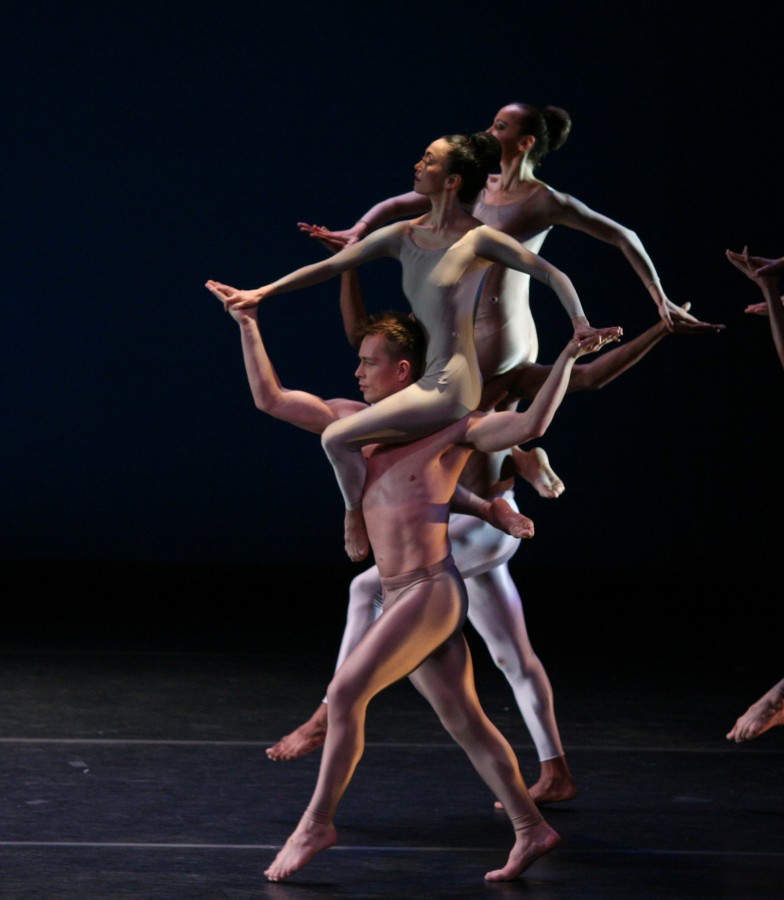
Tadej Brdnik and Miki Orihara of The Martha Graham Company perform Graham’s MAPLE LEAF RAG. (Photo: Costas)
The jubilant Maple Leaf Rag closed the mixed bill. It was Graham’s last complete ballet, a self-mocking, humorous take on the plight of the artist – more specifically on Graham’s plight and that of her dancers. Graham was known to work herself into a creative funk, and would often ask her mentor Louis Horst to “… play me the Maple Leaf Rag” to pull her out of the fog. Marc Shapiro played the Scott Joplin rags from an onstage piano as the entire corps moved about like vaudevillians, young lovers and acrobats, dressed in very pretty Calvin Klein costumes with simple lines and pastel shades.
Everyone was having a great time when, all of a sudden, a solemn dancer, (Ellmore-Tallitsch, dressed as Graham in her signature look of full-skirted dress and sleek hair bun) slowly spun across the stage, Shapiro marking her every turn with a pounding of a somber note on the piano. We expected her to kill the festive mood, but the dancers just picked up where they left off, not paying much mind to “Mirthless Martha,” Horst’s pet name for Graham. It was the most joyful performance of the evening, and as I watched, it seemed remarkable that Graham was 95 years old when she created it.
The evening’s well-selected program gave us broad insight into the creative mind of Martha Graham, whose career spanned nearly seventy years. Her style, technique and choreography were always evolving, but one thing that remained constant was its simplicity, her ability to strip something down to its core, conceptually and visually. She also encouraged dancers to be themselves – a rogue perspective for the time, in contrast to the ballet world where dancers have always been trained to aim for a single ideal. Martha Graham was a trailblazer, possibly the single most important trailblazer for American dance. We are fortunate that her company and school have survived the immense economic and legal challenges of recent decades – a reminder to get out and support our local dance companies this season, all of whom owe Martha Graham and her company a spiritual debt.

